Mariner 175 EFI: Diagnosing & Fixing Zero Fuel Pressure After High-Pressure Pump Replacement
Quick Reference: Fuel Pressure Specifications & Troubleshooting Checklist
First-Response Troubleshooting Steps:
- Listen for pump operation when key is turned to "ON" (should run 2-3 seconds)
- Check electrical connections at pump (12V present when key ON?)
- Inspect VST filter screen for blockage (most commonly overlooked)
- Test fuel pressure regulator for internal leaks
- Verify fuel lines and connections for damage or leaks
- Examine check valves in the fuel system
- Purge air from the system through multiple key cycles
Many owners find themselves stumped when after replacing the high-pressure fuel pump on their 1993 Mariner 175 EFI Magnum, they're left with zero fuel pressure, leaving their boat dead in the water and their weekend plans in tatters. This problem can feel like a dead end, especially when you thought you had the solution.
Fortunately, this isn't a problem without answers. The journey to restoring proper fuel flow often involves a deeper dive into the EFI system than initially anticipated. It's not always about the part you just replaced; it's about understanding how all the components work together.
In this guide, I'll walk you through the intricacies of the 1993 Mariner 175 EFI Magnum's fuel system, common pitfalls that lead to zero fuel pressure after a pump replacement, and a methodical approach to diagnosing and resolving these frustrating issues. We'll cover everything from basic symptoms to advanced troubleshooting techniques.
- Understanding the 1993 Mariner 175 EFI Magnum Fuel System
- Diagnosing the Root Cause of Zero Fuel Pressure
- Essential Maintenance to Prevent Future Fuel Flow Problems
- A Real-World Case Study: Overcoming Fuel Flow Hurdles
My goal here is to equip you, whether you're a weekend warrior or a dedicated DIY mechanic, with the knowledge to get your classic Mariner back on the water, purring like it should.
Owning a classic like the 1993 Mariner 175 EFI Magnum is a treat, a testament to decades of marine engineering. These engines are robust, but their EFI systems, while sophisticated for their time, require diligent care. Understanding how fuel moves through this particular setup is crucial for any troubleshooting. For a wide range of premium boat parts and accessories designed to keep classic engines like yours running smoothly, consider browsing the complete JLM Marine catalog.
Understanding the 1993 Mariner 175 EFI Magnum Fuel System
The Electronic Fuel Injection (EFI) system on your 1993 Mariner 175 EFI Magnum is a marvel compared to older carbureted engines. It precisely meters fuel directly into the cylinders, optimizing performance, fuel efficiency, and emissions. However, this precision means even minor issues can have significant impacts.
Overview of EFI Fuel Delivery
In its simplest form, the EFI system on your Mariner 175 EFI works by delivering pressurized fuel to the injectors, which then atomize and spray it into the intake manifold or directly into the cylinders. The engine's computer (ECU) controls the amount and timing of this fuel delivery based on various sensor inputs. The entire process relies on a constant, stable supply of fuel at the correct pressure.
According to the Mercury 2.4L-2.5L-3.0L V6 EFI Technician's Guide, the EFI fuel system should maintain 6-8 psi at wide-open throttle (with a minimum of 4 psi). At idle, most 175 EFI engines operate with around 34 psi, which is essential for proper atomization and combustion efficiency.
Common Fuel Flow Issues
If your Mariner 175 EFI Magnum is experiencing fuel flow problems, it often manifests as:
- Difficulty starting: The engine might crank but not fire up, or require excessive cranking.
- Stalling: The engine could run for a bit and then suddenly die, especially under load.
- Poor performance: Lack of power, rough idling, or hesitations during acceleration are classic symptoms.
- Lean conditions: Overheating or detonation can occur if the fuel mixture is too lean due to insufficient fuel delivery.
These symptoms can point to a number of issues, from a simple clogged filter to a more complex problem within the fuel pump or injection system itself.
Engine Specifics for the 1993 Mariner 175 EFI Magnum
What makes the 1993 Mariner 175 EFI Magnum unique in its fuel delivery is its specific component integration. According to diagnostic data from experienced Mariner technicians, this model typically operates with a fuel pressure around 34 psi at idle, and users sometimes report a drastic drop to zero fuel pressure within seconds of shutdown after a high-pressure pump replacement. As noted in technical forum discussions, this rapid depressurization often suggests a system leak or a faulty component holding that pressure, rather than just a dead pump.
The 1993 Mariner Factory Service Manual (Section 7B-24) specifies that the EFI fuel system should generally maintain a minimum of 4 psi at wide-open throttle, with a target of 6–8 psi according to the Mercury 2.4L-2.5L-3.0L V6 EFI Technician's Guide.
Fuel Pump and Injector Functionality
The heart of the fuel delivery system is the fuel pump, and the precision of the injectors is what makes EFI so efficient.
Fuel Pump Role
The high-pressure fuel pump on your Mariner 175 EFI is responsible for drawing fuel from the tank, through the low-pressure system and Vapor Separator Tank (VST), and then pressurizing it to the levels required by the injectors. It's a critical component, and when it fails or is incorrectly installed, the entire fuel delivery system grinds to a halt. You can often hear the pump prime for a few seconds when you turn the key to the "on" position. If you don't hear it, that's your first clue.
According to the 1993 Mariner Factory Service Manual (Section 7B-12), the fuel pump should run for approximately 2-3 seconds when the key is turned on, building pressure in the system before the engine starts. This priming function is controlled by the ECU and is essential for proper starting.
Injector Operation
Fuel injectors are essentially high-speed electronic valves. The ECU sends an electrical pulse to open them, allowing the pressurized fuel to spray into the intake. When injectors fail, they might become clogged, stuck open, or stuck closed. A clogged injector might restrict fuel flow, contributing to lean conditions, while one stuck open can over-fuel, leading to rich conditions and potential flooding of the intake manifold.
In my experience, the injectors on the 1993 Mariner 175 EFI Magnum are quite reliable when provided with clean fuel and proper pressure, but they're often unfairly blamed when the actual issue lies with fuel pressure delivery or electrical control signals.
Fuel Line and Filter Inspection
It might sound basic, but the integrity of your fuel lines and filters is paramount. I can't tell you how many times I've seen a perfectly good fuel pump replaced when a simple kink or a cracked hose was the culprit.
Checking Fuel Lines
When inspecting fuel lines on your 1993 Mariner 175 EFI Magnum, look for any signs of degradation. This includes:
- Cracks or splits: Especially near fittings or areas of flex.
- Kinks: Any sharp bends that restrict fuel flow.
- Rubbing or chafing: Which can lead to leaks.
- Loose connections: Ensure all clamps and fittings are secure.
I always take extra time to gently flex the lines to look for internal delamination, which can shed pieces and clog filters or injectors downstream. It's also important to check the lines leading up to the high-pressure pump, not just from it.
The 1993 Mariner Factory Service Manual (Section 7B-8) specifically recommends inspecting the U-shaped fuel hose between the VST and the high-pressure pump, as this is a common failure point that can cause zero pressure after pump replacement.
Fuel Filter Maintenance
The EFI system relies on clean fuel. Contaminants can quickly clog the fine mesh in the injectors or the internal screens within the Vapor Separator Tank (VST) and fuel pressure regulator.
- Regular Checks: Depending on your fuel quality and usage, you should visually inspect and potentially replace your fuel filters regularly. This usually includes a primary filter, often found near the fuel tank or primer bulb, and finer filters within the VST assembly itself.
- VST Filter: The VST on these engines often has a small screen or filter element. If this gets clogged, it starves the high-pressure pump, even if the pump itself is working perfectly. I've seen VST filters get so gunked up they completely restricted fuel flow.
The 1993 Mariner Factory Service Manual (Section 7B-15) recommends inspecting the VST filter screen annually or whenever fuel system work is performed. This is particularly critical after replacing the high-pressure pump, as debris from the old pump or fuel system can be dislodged during the replacement process.
If you've just replaced your high-pressure pump and have zero pressure, and you haven't changed filters recently, this is your next logical step. For sourcing authentic fuel filters and pump parts suited for your outboard, JLM Marine offers a wide selection with OEM quality.
Diagnosing Fuel Flow Problems
When faced with zero fuel pressure after a pump swap, it's easy to get tunnel vision and assume the new pump is faulty. However, I've learned through experience that the problem often lies elsewhere in the system. A systematic diagnostic approach is key.
Symptoms of Fuel Flow Problems
As I mentioned, the symptoms can be varied:
- Engine cranks but won't start: This is often the first indication, as no fuel means no combustion.
- Stalling after starting: The engine might briefly run on residual fuel in the lines or rail but die as soon as the demand exceeds the supply.
- Complete lack of fuel pressure: Using a gauge, you'll see zero PSI, even when the pump should be running.
- Rapid pressure loss after shutdown: As noted in technical forum discussions, if pressure drops from, say, 34 psi at idle to 0 psi within 6–15 seconds after shutoff, it points to an internal leak in the system rather than a pump failure.
Diagnostic Tools to Use
To pinpoint the issue, you'll need a few essential tools:
- Fuel Pressure Gauge: This is non-negotiable. You need to accurately measure the fuel pressure at the rail. It should have a Schrader valve connection.
- Multimeter: Essential for checking voltage at the pump connector and testing for continuity and resistance in wiring.
- Basic Hand Tools: Wrenches, screwdrivers, pliers for removing covers and accessing components.
- Service Manual: Your 1993 Mariner 175 EFI Magnum's service manual is invaluable for wiring diagrams, component locations, and specific diagnostic procedures.
The 1993 Mariner Factory Service Manual (Section 7B-16) outlines specific voltages expected at the fuel pump connector during operation: 12-14.5 volts during priming and run conditions. Any significant deviation indicates electrical issues that must be addressed before condemning the new pump. For handy replacement parts like fuel pumps or pumps kits, the JLM Marine fuel pump collection is worth exploring.
Step-by-Step Troubleshooting
Here's a logical sequence I follow whenever I encounter zero fuel pressure after a pump replacement:
- Verify Pump Operation: Turn the key to "on." Listen for the fuel pump to prime for 2-3 seconds. If you hear nothing, check for power at the pump connector using your multimeter. If there's no power, you're looking at an electrical issue (fuse, relay, wiring, or ECU control). If there is power and the pump still doesn't run, the new pump might be faulty, or the power/ground connection is bad.
- Check Fuel Pressure at the Rail: Connect your fuel pressure gauge. If the pump runs but you read zero PSI, the problem is likely a leak, a blockage before the measurement point, or a faulty regulator.
- Inspect for Leaks: Carefully examine all fuel lines, connections, and the VST assembly for any visible fuel leaks. Even a small seep can prevent pressure buildup. Pay attention to O-rings and seals on the new high-pressure pump.
- Prime the System: After any fuel system work, it's essential to remove air. Cycle the key several times, allowing the pump to prime, or use the manual primer bulb if your system has one. Air in the VST or lines can prevent the pump from functioning correctly.
- Test the Regulator: The fuel pressure regulator is a common culprit for rapid pressure loss. If pressure is present but quickly dissipates, the regulator might be leaking internally or stuck open. The 1993 Mariner Factory Service Manual (Section 7B-20) provides a specific test procedure involving clamping the regulator return line and observing pressure changes.
- Inspect Filters and Screens: If the pump runs and you have some pressure, but it's low or inconsistent, clogged filters are a prime suspect. This includes inline filters and the filter screen within the VST.
- Check for Blockages: Ensure fuel lines aren't kinked and that the intake fitting at the tank pump (if applicable) or the line feeding the high-pressure pump isn't obstructed.
I always try to work logically, starting with the simplest checks and moving to more complex diagnostics. My experience tells me that often, the issue isn't a failed new part, but a problem with its installation or another component in the fuel delivery chain.
Common Faults and Solutions
Let's break down some of the most frequent culprits behind zero fuel pressure after replacing a high-pressure pump.
Blocked Fuel Filters
As I mentioned, clogged fuel filters or VST screens are incredibly common. They'll starve the high-pressure pump of fuel, leading to no pressure or inconsistent pressure.
- Solution: Replace all inline fuel filters and thoroughly clean or replace the filter screen within the VST. Don't overlook this step; it's simple and often overlooked.
According to the 1993 Mariner Factory Service Manual (Section 7B-15), the VST filter screen should be inspected and cleaned every 100 hours of operation or annually, whichever comes first. In my experience, this maintenance item is frequently neglected, making it a prime suspect in post-replacement pressure issues.
Faulty Fuel Pump
While you just replaced it, there's always a chance the new pump is indeed faulty, or it wasn't wired or seated correctly.
- Solution: Double-check electrical connections at the pump. If you confirmed proper power and ground and still have zero pressure, contact your supplier for a replacement pump.
It's worth noting that while OEM pumps are generally reliable, non-OEM options vary widely in quality. Some non-OEM parts are manufactured in the same factories as OEM components and maintain similar quality standards, but others may not meet the same specifications. When selecting replacement parts, I recommend researching the manufacturer and their quality control processes.
Air in Fuel Lines
Air is the enemy of all hydraulic systems, and fuel systems are no exception. Air pockets can prevent the pump from generating pressure or cause it to cavitate.
- Solution: Proper priming is key. Cycle the ignition key to the "run" position multiple times (each time for about 3-5 seconds) to allow the pump to cycle and push air out. If you have a primer bulb, ensure it's firm before starting. Some users also report success by bleeding air at the fuel rail's Schrader valve until solid fuel emerges.
The 1993 Mariner Factory Service Manual (Section 7B-22) specifically mentions that air in the system can mimic the symptoms of a failed pump. The manual recommends multiple priming cycles (at least 4-5) after any fuel system service to ensure all air is purged.
Maintenance Tips to Prevent Fuel Flow Issues
Prevention is always better than a cure, and staying on top of routine maintenance for your 1993 Mariner 175 EFI Magnum's fuel system can save you a lot of headaches.
Regular Inspection Schedule
I make it a habit to inspect my fuel system components at least annually, or more often if I'm experiencing any unusual symptoms. This includes visually checking fuel lines, the primer bulb (if equipped), and listening for the fuel pump during startup.
The 1993 Mariner Factory Service Manual (Section 2-5) outlines a comprehensive inspection schedule that includes fuel system checks:
- Monthly: Visual inspection of fuel lines and connections
- Every 50 hours or annually: Replace primary fuel filter
- Every 100 hours or annually: Clean VST filter screen, inspect pressure regulator
Proper Fuel Storage Recommendations
Bad fuel is a major cause of fuel system problems.
- Use Fresh Fuel: Don't let fuel sit in your tank for extended periods, especially over winter. Old fuel can break down and form varnish or gum that clogs filters and injectors.
- Use Fuel Stabilizers: Before storing your boat, run the engine with a quality fuel stabilizer added. This helps prevent fuel degradation.
- Consider Ethanol Additives: If you commonly use ethanol-blended fuels, which are prevalent in many areas, they can be more corrosive to older fuel system components. I personally prefer non-ethanol fuel whenever possible for my classic engines. If you must use ethanol fuel, ensure you use an additive designed to combat its negative effects, like ethanol-resistant fuel system cleaners.
The 1993 Mariner Factory Service Manual (Section 2-10) specifically warns against the use of ethanol-blended fuels in older EFI systems without proper additives, as ethanol can damage rubber components and create phase separation issues in the fuel tank.
Using Fuel Stabilizers and Cleaner Additives
I'm a big believer in using quality fuel additives.
- Fuel Stabilizers: As mentioned, crucial for storage to prevent fuel breakdown.
- Fuel System Cleaners: Periodically running a cleaner through the system can help keep injectors and fuel passages clean and free from varnish deposits. Always use cleaners specifically designed for marine EFI engines to ensure compatibility and avoid damaging sensitive components.
When selecting additives, I follow the recommendations in the 1993 Mariner Factory Service Manual (Section 2-12), which suggests using only marine-specific fuel treatments compatible with EFI systems. Automotive additives may contain components that can damage marine fuel systems or interfere with water separation.
Real-Life Case Study: Resolving Fuel Flow Issues on a 1993 Mariner 175
To illustrate how these issues can play out, let's look at a situation strikingly similar to what many owners face.
Background of the Boat Owner
Meet "Dave," a passionate angler who recently acquired a beautiful 1993 Lund Baron 2100 GranSport. His pride and joy came equipped with a 1993 Mariner 175 EFI Magnum, a bulletproof engine, or so he thought. After a successful initial outing, Dave decided to give the engine a bit of a tune-up, starting with replacing what he believed was a slightly tired high-pressure fuel pump.
Problem Symptoms Experienced
Dave successfully swapped out what he thought was the old pump. He reconnected everything, turned the key, and… nothing. The engine would crank over, but it sounded weak, like it was struggling for air, not fuel. A quick check with a fuel pressure gauge confirmed his worst fears: zero PSI at the fuel rail. He was devastated, thinking the new pump was DOA or he'd somehow damaged it during installation.
Steps Taken to Diagnose Problem
Dave, being a hands-on type, didn't immediately throw in the towel. He remembered reading on forums about similar issues and decided to follow a methodical diagnostic path:
- Electrical Check: He first confirmed that the fuel pump connector was receiving the expected ~12V when the key was turned to "on." It was. This ruled out major electrical faults like a blown fuse or a bad relay.
- Visual Inspection: He meticulously re-inspected every fuel line connection, looking for any overt leaks. Nothing obvious presented itself. He also checked the primer bulb, which felt firm, indicating the low-pressure side might be okay.
- VST and Filters: Recalling advice about the Vapor Separator Tank (VST), Dave decided to pull it apart. To his surprise, the small internal filter screen within the VST was nearly completely blocked with a dark, gummy residue. This was preventing adequate fuel from reaching the high-pressure pump, even though the pump itself was receiving power.
- Regulator Check: While the VST was apart, he also inspected the fuel pressure regulator and its associated screens. He found no obvious damage but decided to thoroughly clean the regulator's passage and screen assembly.
Solution Implemented and Outcome
After carefully cleaning the VST filter screen and reassembling the VST, Dave also opted to flush out the fuel lines from the tank to the VST to remove any potential debris. He reinstalled the new high-pressure pump, ensuring all seals were properly seated.
With fingers crossed, he turned the key. This time, the familiar whirring of the fuel pump was accompanied by the gauge needle climbing steadily. It settled around 35 PSI at idle. He fired up the Mariner 175 EFI, and it roared to life with a smooth, strong purr. Dave was ecstatic. The issue wasn't the new pump itself, but a downstream restriction in the VST filter that was starving the pump.
This solution aligns perfectly with the troubleshooting procedures outlined in the 1993 Mariner Factory Service Manual (Section 7B-24), which emphasizes checking all filters and screens before condemning a newly installed pump. As the manual states, "A clogged VST filter screen is the most common cause of apparent pump failure after replacement."
This experience cemented for him the importance of inspecting all components in the fuel circuit, not just the one you replaced. It reinforced his belief that a comprehensive approach is always best.
FAQ on Mariner 175 EFI Fuel Flow
-
How do I know if my Mariner 175 EFI fuel pump is failing? You'll likely experience symptoms like difficulty starting, stalling at idle or under load, or a complete lack of power. If you turn the key and don't hear the fuel pump priming (a 2-3 second whirring noise), it's a strong indicator of pump failure or an electrical issue preventing it from running. Using a fuel pressure gauge to confirm low or zero pressure is the definitive test.
-
What are the signs of a clogged fuel injector on a Mariner outboard? Clogged injectors typically lead to lean fuel conditions. This can manifest as a rough idle, hesitation during acceleration, lack of power, or even engine overheating and detonation. If only one injector is clogged, you might notice a specific cylinder misfiring or running rougher than the others.
-
How often should I replace the fuel filter on my 1993 Mariner 175? According to the 1993 Mariner Factory Service Manual (Section 2-8), primary fuel filters should be replaced every 50 hours of operation or annually, whichever comes first. For the finer filters within the VST, inspection every 100 hours or annually is recommended, with replacement as needed based on condition. Your fuel quality, how often you use the boat, and whether you use ethanol fuel will all influence the required frequency.
-
Can ethanol fuel cause problems with the Mariner EFI fuel system? Yes, it absolutely can. Ethanol attracts and absorbs water, leading to phase separation in your fuel tank. It can also act as a solvent, breaking down older rubber seals and hoses that weren't designed for it, causing leaks and clogging. It can also contribute to gumming and varnish buildup. The 1993 Mariner Factory Service Manual (Section 2-10) specifically cautions about ethanol use in older systems. If you use ethanol fuels, it's crucial to use a good quality fuel stabilizer/treatment designed for marine EFI engines to mitigate these risks.
-
How can I bleed air from the fuel lines effectively? On EFI systems, the most common method is to cycle the ignition key to the "on" position multiple times for about 3-5 seconds each, allowing the electric fuel pump to prime the system and push air out. If your engine has a manual primer bulb, pump it until it becomes firm before attempting to start. You can also, with caution, relieve pressure at the Schrader valve on the fuel rail until you see solid fuel flowing, but be prepared for some fuel spillage. The 1993 Mariner Factory Service Manual (Section 7B-22) recommends at least 4-5 priming cycles after any fuel system service.
Conclusion
Reaching a state of zero fuel pressure after replacing your high-pressure pump on a 1993 Mariner 175 EFI Magnum can be a maddening experience, but it's a solvable puzzle. My own experiences, and those shared by countless other boaters in forums, highlight that the solution often lies beyond the pump itself. It requires a systematic approach, starting with electrical checks for power to the pump, then moving to inspect the entire fuel delivery pathway.
The critical takeaway from my dives into diagnosing these issues is the importance of the entire fuel circuit's integrity. From the fuel tank to the injectors, every component plays a vital role. A simple, seemingly insignificant part like a clogged VST filter screen or a faulty regulator can completely starve your engine, even with a brand-new high-pressure pump installed.
Don't be afraid to get your hands dirty, use your diagnostic tools rigorously, and consult your service manual. Ensuring correct fuel flow is fundamental to a happy and reliable boating experience, and I'm confident that by following these steps, you can get your classic Mariner running strong again.
For more expert advice and genuine parts to keep your marine engine performing at its best, visit the JLM Marine home page.
Important Safety Note: While this guide provides comprehensive troubleshooting steps for Mariner 175 EFI fuel system issues, always consult a certified marine technician if you're uncomfortable performing these procedures or if safety issues arise. Fuel system work involves flammable materials and potential fire hazards, requiring appropriate safety precautions and expertise.
References and Resources:

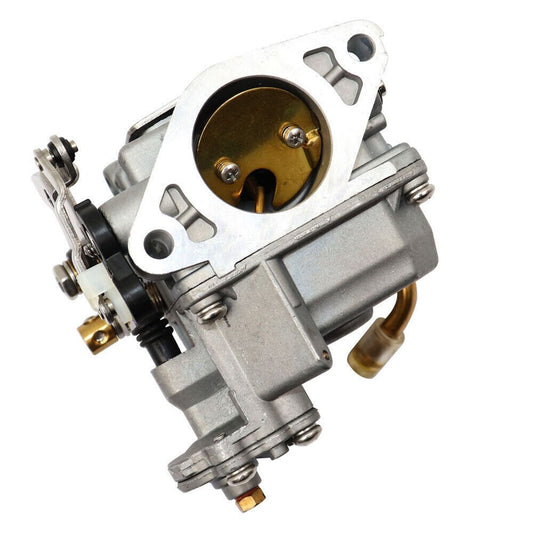
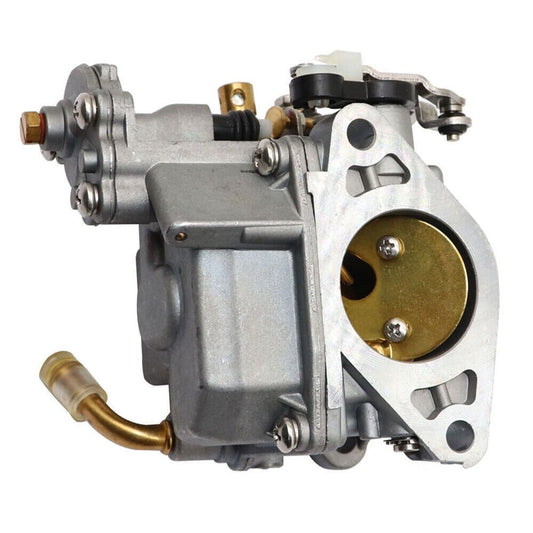
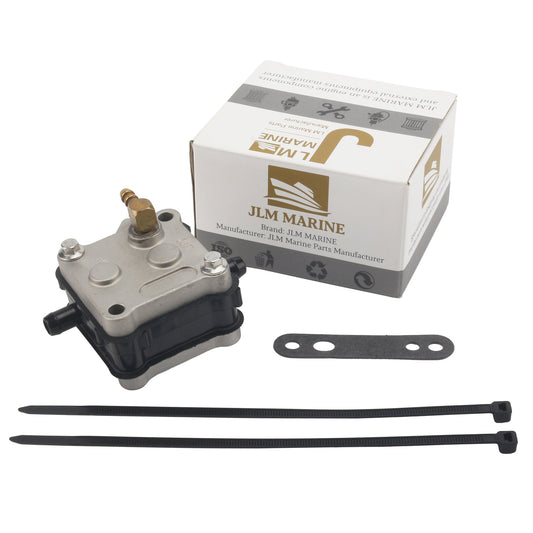
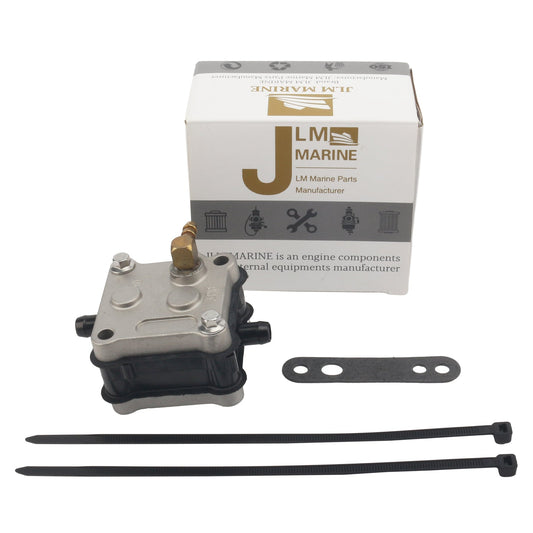
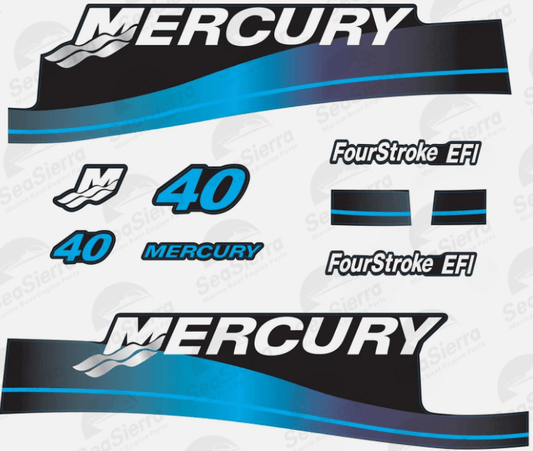
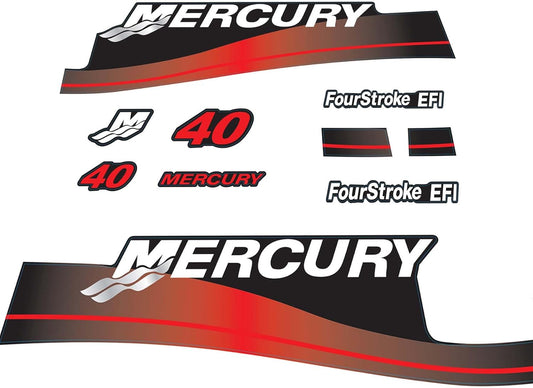
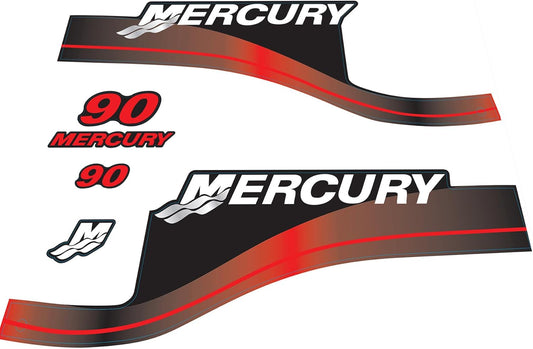
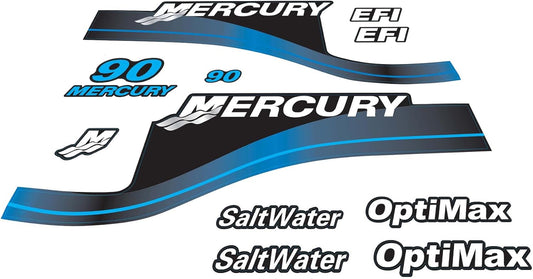

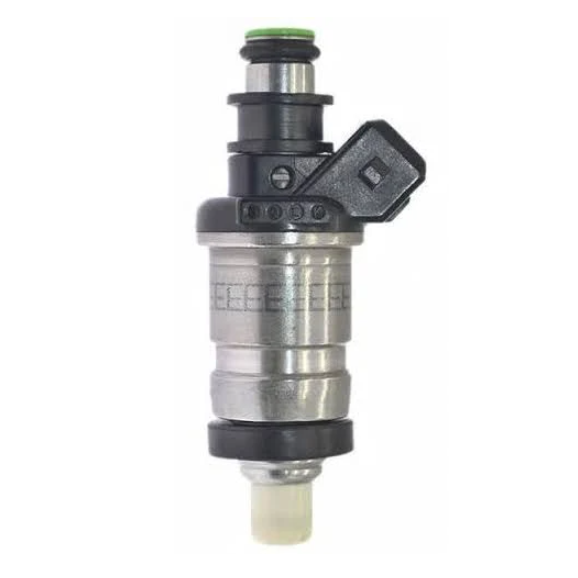
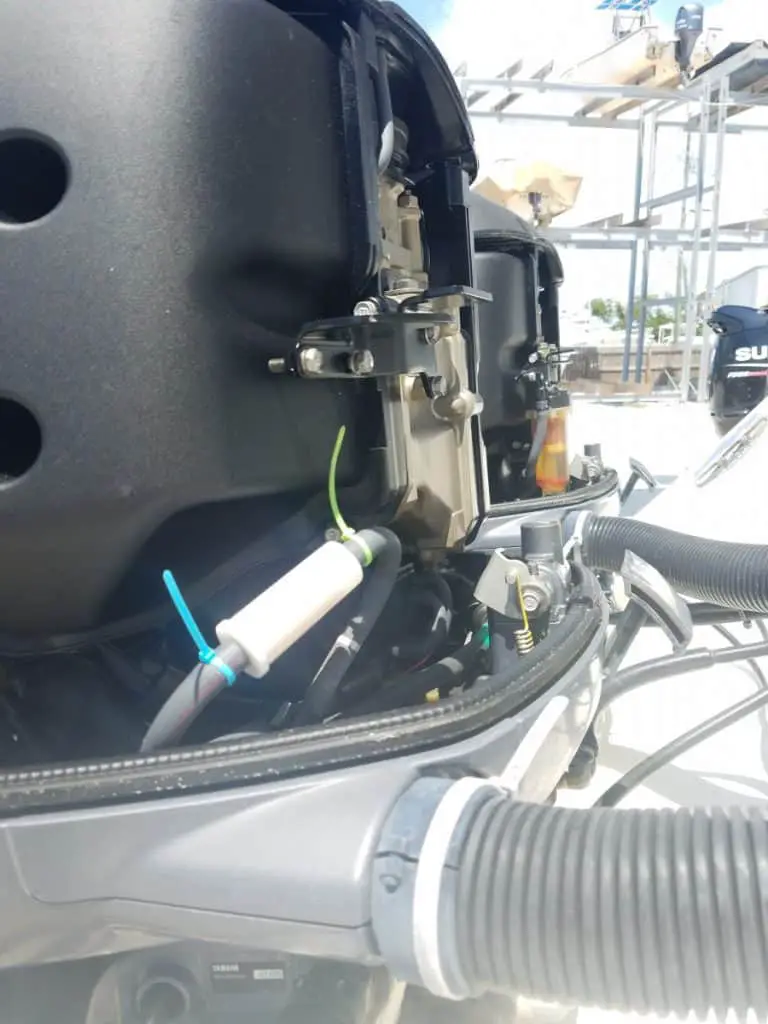
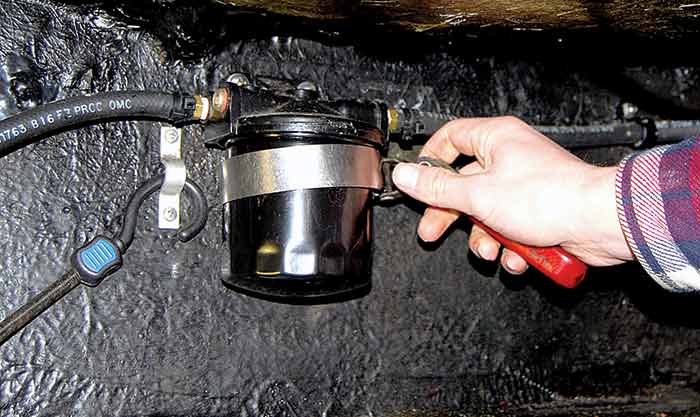
Leave a comment
Please note, comments need to be approved before they are published.